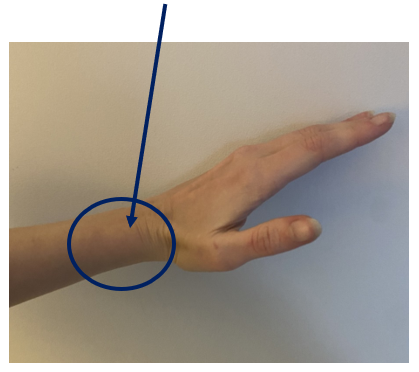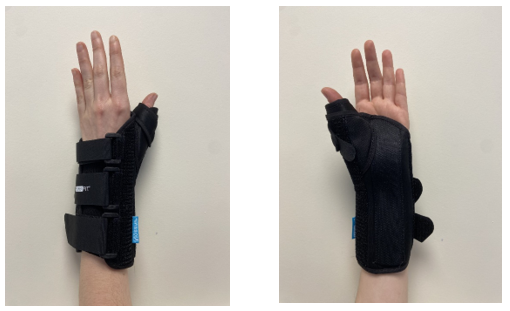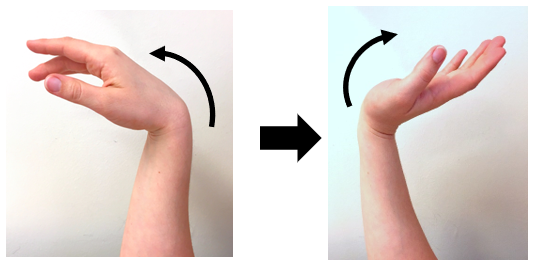De Quervain’s Tenosynovitis
De Quervain’s tenosynovitis is a condition where there is irritation to the tendons and the tendon sheath (outer layer of the tendon) at the side of the wrist where the thumb is. This can cause pain when moving the thumb and wrist.
Main area of pain

Symptoms
- Localised pain and swelling near the base of the thumb
- Pain impacting function – especially repetitive activities
- Difficulty moving the thumb and wrist.
Causes / risk factors
- Repetitive overuse activities such as gripping, grasping and twisting of the wrist and thumb
- More common in women
- De Quervain’s has been linked to new mothers. It is thought this could be due to hormonal changes, as well as changes to the use of the hand with the repetitive movements of lifting a baby
- Injuries to the radial aspect of the wrist can cause inflammation to the affected tendon sheath increasing the risk of developing De Quervain’s.

Treatment
- The majority of symptoms settle with rest and the correct changes to activity
- A splint is used to immobilise the wrist and thumb allowing the affected tendons to rest and heal. It is advised to trial six weeks of full-time day and night splinting. Only remove the splint for showering and completing the wrist exercises below to ensure the wrist does not get stiff
- An example of a splint is shown above, there are different versions of this splint you can use. Ensure both the thumb and wrist are immobilised in the splint
- Adapting activities is important to rest the affected tendons. Try and avoid or modify the activities that aggravate your symptoms during the six weeks of resting and when weaning out of the splint
- Avoid deviating (side to side) movements of the wrist as this movement usually induces the most pain
- Anti-inflammatory gels can support with pain management. Follow the instructions on the packet and discuss using them safely with a pharmacist, especially if you have any underlying health conditions
Remove the splint at least five times a day to complete the below wrist movements x10 repetitions.

After six weeks of rest
- If the pain reduces with six weeks of splinting the next stage is to slowly wean from the splint over two to four weeks, only removing it for light pain-free function. After the weaning period, if the pain has improved the splint can be discarded and focus on gradually getting back to normal use of the hand.
- If there no change to the pain with full time splinting further treatment may be required such as steroid injections. Seek advice from you GP for further treatment. If steroid injections do not help to manage symptoms, a surgical release of the tendons may be required.
Contact numbers
We hope that you have found this information useful. If you have any questions or are worried about anything, please speak to the Hand Therapy Department on 01305 255931.
About this leaflet
Author: Felicity Tucker, Senior Occupational Therapist
Written: February 2025
Approved: April 2025
Review date: April 2028
Edition: 1
If you have feedback regarding the accuracy of the information contained in this leaflet, or if you would like a list of references used to develop this leaflet, please email patientinformation.leaflets@dchft.nhs.uk
Print leaflet